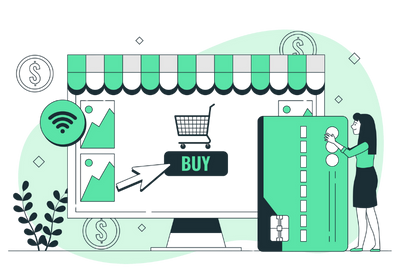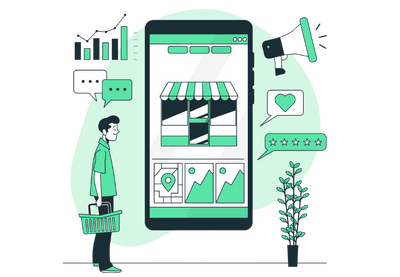Your Blueprint for Online Selling Success

Let’s cut to the chase—if your business isn’t selling online in 2024, you’re leaving money on the table.
But here’s the hard truth: Just having an online store isn’t enough.
Thousands of e-commerce stores launch every day. Most fail within months because they treat their shop like a digital brochure instead of a revenue-driving machine.
So, how do you build an e-commerce business that actually sells? Let’s break it down.
Why Most E-commerce Stores Fail (And How to Avoid It)
Mistake #1: “Build It and They Will Come” Mentality
-
Fact: 90% of e-commerce startups fail because they don’t drive traffic.
-
Solution: Your store needs a marketing strategy from day one.
Mistake #2: Treating E-commerce Like a Side Project
-
Fact: The top online stores obsess over conversion rates, customer experience, and retention.
-
Solution: Treat your store like a real business, not just a website.
Mistake #3: Copying Amazon (But Without the Budget)
-
Fact: Small stores win by niche focus, better branding, and personalization.
-
Solution: Stand out, don’t blend in.
The 5-Step E-commerce Success Formula
1. Choose the Right Platform (Not Just the Cheapest One)
-
Shopify: Best for beginners (easy setup, great apps)
-
WooCommerce: Best for WordPress users (full control)
-
BigCommerce: Best for scaling brands (built-in features)
Pro Tip: Don’t get stuck on “Which is best?”—pick one and start selling.
2. Optimize for Conversions (Before Driving Traffic)
-
High-quality product photos (lifestyle shots + zoom features)
-
Clear, benefit-driven descriptions (not just specs)
-
Trust badges (secure checkout, money-back guarantees)
-
One-click upsells (recommended products at checkout)
Example: Beardbrand increased conversions by 28% just by improving product images.
3. Master E-commerce SEO (Free, Targeted Traffic)
-
Keyword-optimized product titles (“Men’s Leather Wallet” vs. “Accessory #12”)
-
Blog content answering customer questions (“How to style a leather wallet”)
-
Internal linking (keep visitors browsing longer)
Fact: 46% of product searches start on Google—not Amazon.
4. Launch with a Marketing Plan (Not Just a Store)
-
Paid Ads: Facebook/Instagram for broad reach, Google Shopping for high intent
-
Email Marketing: Abandoned cart emails recover 30% of lost sales
-
Social Proof: User-generated content (reviews, unboxing videos)
Pro Tip: Start with one traffic source, master it, then expand.
5. Focus on Retention (Because Repeat Customers Spend More)
-
Loyalty programs (points, VIP tiers)
-
Personalized recommendations (“Customers who bought this also liked…”)
-
Subscription options (for consumable products)
Stat: Returning customers spend 67% more than new ones.
3 E-commerce Stores Doing It Right
-
Gymshark – Built a cult following through influencer marketing before selling a single product.
-
Dollar Shave Club – Used viral video marketing to disrupt a giant industry.
-
Warby Parker – Made online glasses shopping easy with virtual try-ons.
Common E-commerce Pitfalls to Avoid
🚫 Ignoring Mobile Users (60% of traffic comes from phones)
🚫 Complicated Checkout (Every extra step loses 10% of buyers)
🚫 No Clear Returns Policy (63% of shoppers check this before buying)
🚫 Forgetting Customer Service (Live chat can boost conversions by 40%)
How to Get Started (Without Overwhelm)
-
Pick a Niche (Don’t sell everything—sell one thing well)
-
Validate Demand (Run Facebook ads to a landing page before stocking inventory)
-
Start Small (10 great products > 100 mediocre ones)
-
Test & Improve (A/B test everything—from product pages to email subject lines)
Final Thought: E-commerce Isn’t Just a Sales Channel—It’s a Business Model
The winners in online retail don’t just list products—they:
✅ Solve real problems for a specific audience
✅ Create seamless buying experiences
✅ Build communities around their brands
Need help launching or optimizing your store? At Najah Brand Elevation, we help businesses build, grow, and scale profitable e-commerce operations. Let’s turn your online store into your best salesperson.









